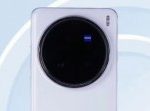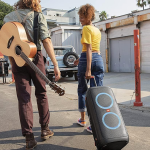In a new study published in the journal PLOS One, University of Cambridge experts reviewed a variety of DIY hacks people have used to make masks fit better, including using rubber bands or tape.For the study, four volunteers were recruited to try seven different mask hacks. Other methods included tying the ear bands to make the masks fit more tightly, or stuffing the gaps with bandages. “A range of fit hacks, taken from the internet and from observing the public, were tested with two masks: a KN95 mask and a surgical mask,” the researchers wrote.While wearing each mask and hack combination, participants did seven minutes of various exercises designed to mimic real world interactions.These included talking, turning their head side to side, bending over, smiling, nodding, and breathing normally and heavily.The researchers measured how well the masks fit by monitoring the filtration efficiency and calculating a “fit factor’ score”. The results show better fitting masks have fewer gaps between a person’s face and the edge of the mask, ensuring the air inhaled is filtered through the mask.The researchers found that the most effective tactic was to wrap pantyhose around the bottom half of the face — on top of a mask.The scientists said this method could reduce the amount of viral particles by up to seven times more than a loose mask on its own, by sealing the gaps around the nose and mouth.However, despite its possible effectiveness, researchers acknowledged the social and physical implications of wearing tights on your face in public, noting it was “unlikely to be tolerated for extended periods of time”.The final results revealed that pantyhose and cloth tapes were most effective at improving how well the KN95 mask fit.NED-5470-Face-mask-hacksMeanwhile, using gauze to stuff the gaps between the face and KN95 masks only offered a “minor improvements”.And using gauze on top of the KN95 covering barely improved the fit. Tying the earbands of the KN95 mask only slightly improved the fit, because they already fit so tightly.Surgical masks performed better if worn in combination with pantyhose or if the gaps were sealed using cloth tape.Rubber bands and tying ear bands were the least effective way of getting a surgical mask to fit better, but still offered more protection than wearing the mask alone. “Fit hacks can be used to effectively improve the fit of surgical and KN95 masks, enhancing the protection provided to the wearer,” the researchers wrote.“However, many of the most effective hacks are very uncomfortable and unlikely to be tolerated for extended periods of time. “The development of effective fit-improvement solutions remains a critical issue in need of further development.”The rubber band hack was found to put painful pressure on the ears and face, as well as reduced blood circulation to the ears for some people. Meanwhile, pantyhose gave volunteers “high levels of discomfort”, caused problems speaking and sometimes covered the participants’ eyes during the exercises. And while fabric tape was comfortable to wear, it was uncomfortable to remove and the researchers noted sweat or movement over time could dislodge the tape.While recognising benefits and discomfort with the hacks, the researchers noted that these methods could help health workers, who commonly wear both surgical and KN95 masks, modify their mask to gain more protection.The team also said the findings could help designers to improve masks and mask fitting devices.
Powered by WPeMatico




